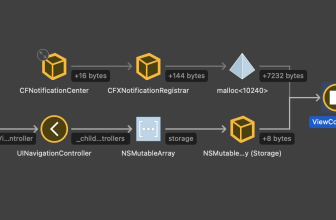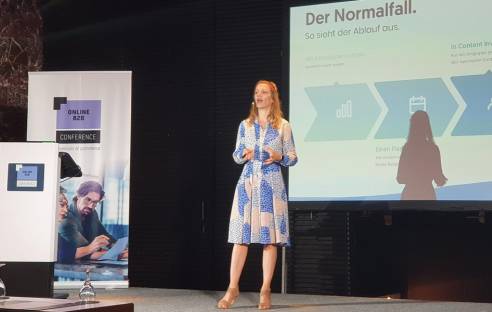With agile teams and a multi-million dollar budget, CTO Ralf Gernhold is developing Deutsche Bahn’s new digital sales platform in the Amazon cloud. […]
More than 500 project participants, 22 interdisciplinary development teams and a budget in the tens of millions – these are the basic data of one of Deutsche Bahn’s largest and most ambitious projects. Under the name “Vendo”, the Group is pursuing an ambitious program to modernize customer interfaces for bahn.de and the popular app DB Navigator.
Program manager and at the same time “customer” of the project is Ralf Gernhold, since 2019 CTO at the railway subsidiary DB Vertrieb and Head of Passenger Sales Systems. “We want to offer rail customers a completely new customer experience,” he describes the goals. “To this end, we are rebuilding Germany’s most successful mobility platform on the basis of state-of-the-art technologies.“ After the go-live of the new platform, he wants to switch off legacy systems. In the end, according to the manager, Vendo is about maintaining the competitiveness of Deutsche Bahn.
The IT systems of the railway date back to a time when tickets were sold through other, independent channels. This included the classic counters as well as ticket machines in the station halls. From an IT point of view, the notorious silos were created, which not only led to a high effort for changes, but also provided customers with different services, conditions and points of contact with the railway.
With Vendo, the group wants to get such problems under control and present travelers with uniform user interfaces and services across channels. This is accompanied by massive conversions in the backend. The railway is redesigning all affected systems in order to improve the user experience and at the same time reduce the time-to-market.
Technically, Vendo is completely based on cloud services, explains Gernhold, who was CIO of Miles & More for a good four years before joining Bahn. He relies on a microservices architecture in the AWS cloud (Amazon Web Services): “We break down the monolithic software structure and use state-of-the-art technologies in the cloud.“ This includes, among other things, the Kubernetes container orchestration platform, which the teams integrate via the Amazon Elastic Kubernetes Service (EKS). For data storage, the Group relies, for example, on the open source database PostgreSQL and Amazon’s storage service S3.
The new sales platform is not only developed in the Amazon Cloud, but also operated on the servers of the cloud provider. “This is likely to be one of the largest Amazon installations worldwide,” says Gernhold. The hyperscaler is particularly challenged in terms of transaction volumes and the necessary high availability of the platform. In the past, the railway’s systems had to handle more than 1,500 bookings per minute. Uninterrupted operation is business-critical for the Group: if the platform fails, it can no longer sell tickets via this channel.
Closely linked to the project is a large–scale digitization and software reengineering project with DevOps models. For Vendo, Bahn relies on agile methods and uses, among other things, the Scaled Agile Framework (SAFe). “We want to move away from complex releases and focus instead on continuous delivery, integration and deployment,” Gernhold explains the procedure.
This is accompanied by far-reaching organizational changes. DB Vertrieb set up interdisciplinary teams for the new distribution system, which is divided into 21 domains, in which IT and department experts work together. After the completion of the program, a new structure is to be created that will take care of the further development of the platform.
Already at the end of 2020, the railway subsidiary started with a “closed public beta” for the next generation of the “Next DB Navigator” app. In January 2021, the beta version of “next-bahn.de “. Around 12,000 selected railway customers will have the opportunity to test the new frontends and provide feedback. Gernhold: “This helps us on the way to product maturity based on the new system architecture.“ It not only allows you to test functions, but also to play back customer feedback to the Vendo teams. DB Vertrieb wants to take the next step with the “public beta” versions.
The Group’s own IT service provider DB Systel acts as a partner. “He is responsible for the operation of the platform, supports us with methodological know-how and takes care of sourcing,” explains the CTO and emphasizes: “DB Vertrieb has project responsibility for Vendo.“
Gernhold’s approach fits in with the comprehensive cloud strategy that Bahn has been pursuing for a long time. Since the end of 2020, the Group no longer operates its own data centers, several hundred applications have been migrated to cloud platforms from Microsoft and AWS. There has also been a lot of movement in the Group in recent years in terms of IT organization and agile working methods.
The former CIO and DB Systel BOSS Christa Koenen broke up hierarchical structures in IT and established a network of self-organized teams. Already in 2019, the manager, who now sits on the Board of DB Schenker, told the CIO magazine: The railway needs agile methods not only in IT, but also in other business areas.
CTO Gernhold continues this path at DB Vertrieb – and at the same time knows about the difficulties of introducing agile methods in a large corporation. In his experience, there are often “three misunderstandings” in such projects that those responsible would have to deal with: “First: new work protagonists and agilists must take the lead. This often does not work out in practice. Secondly, money and time are unlimited. Thirdly, the agile approach only brings advantages. The disadvantages are often hidden and not discussed at all.“
Against this background, he is primarily concerned with establishing “the ability to control”. To this end, he has gathered a small team of experts around him and introduced a sophisticated reporting system. Every week a “Delivery Management Board” meets with all important responsible persons. The main focus is on status updates, successes and learning from failures as well as an assessment of risks for the future course of the program. In the end, however, it is crucial to get the right people on board, Gernhold draws an interim balance. This applies in particular to the acceptance of agile methods in the company: “We do not need agile fundamentalists.“
*Wolfgang Herrmann is Editorial Manager CIO Magazine at IDG Business Media. Previously, he was Deputy Editorial Director of the IDG publications COMPUTERWOCHE and CIO and editor-in-chief of the sister publication TecChannel.













